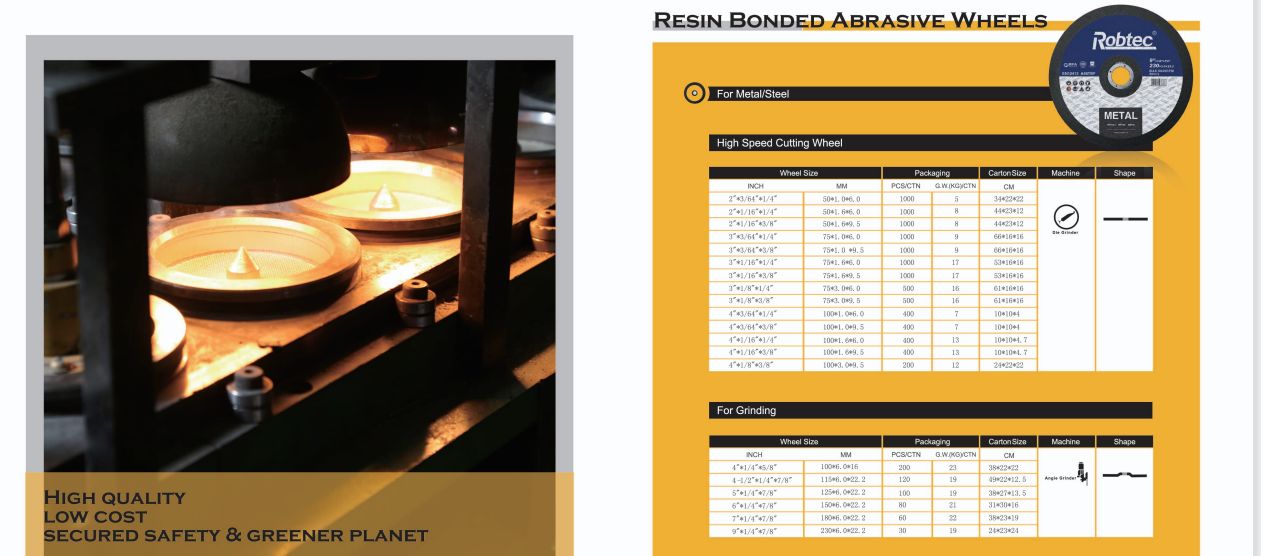If you’ve ever worked with metal or masonry materials, you’ve probably come across cutting and grinding discs. These two tools are commonly used in the construction and manufacturing industries, but do you know the real difference between them? In this blog post, we’ll discuss the differences in thickness and purpose between cutting and grinding wheels to help you understand which tool is best for your specific project.
First, let’s talk thickness. When it comes to cutting and grinding discs, thickness plays a vital role. For example, let’s look at a 100mm disc. Grinding discs are usually thicker than cutting discs. Regular grinding discs are over 6mm thick, providing stability and durability during grinding. Cut sheets, on the other hand, are much thinner, with an average thickness of about 1.2 mm. This thinness allows for precise, clean cuts that minimize material waste.
Now that we understand the difference in thickness, it’s worth understanding the different uses for these discs. Grinding discs are mainly used for polishing and smoothing surfaces. They have abrasive properties that remove excess material from the workpiece, resulting in a smooth, uniform surface. This makes the grinding disc ideal for tasks such as removing welds, shaping metalwork, and even sharpening tools. With their thicker profiles, they can withstand the forces and heat generated during long grinding sessions.
Cut-off wheels, on the other hand, are specially designed for cutting various materials such as metal, concrete or tiles. Their thinner profile allows for precise cuts, allowing for intricate and detailed work. Cut-off wheels are commonly used for applications such as cutting pipe, cutting sheet metal, and even carving grooves in brick. Due to its slim design, the cutting disc is less likely to cause heat damage to the material being cut, reducing the risk of deformation or discoloration.
When choosing the right disc for your project, it is critical to consider thickness and intended application. Grinding discs are ideal if you need smoothing or polishing tasks. Its thickness provides stability and longevity, ensuring you can get the finish you want. Conversely, if you need to make cuts, a cutting disc will be your best choice. Its low-profile profile guarantees precision for clean, accurate cuts without compromising material integrity.
To sum up, cutting discs and grinding discs are very different in thickness and use. Grinding discs are thicker and are primarily used for polishing and smoothing surfaces, while cutting discs are thinner and designed for precision cutting applications. Knowing these differences will enable you to choose the most suitable disc for your specific needs, ensuring the success and quality of your projects.
Post time: 28-06-2023





